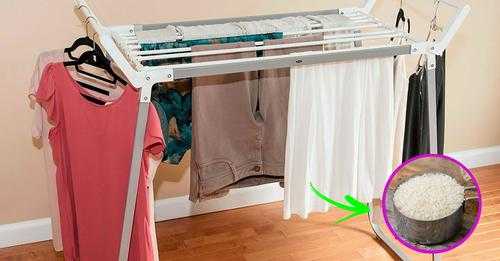ADVERTISEMENT
t or heated drying rack that suits your space and budget. Many models are designed to handle a variety of fabrics, from heavy towels to lightweight shirts.
For Complete Cooking STEPS Please Head On Over To Next Page Or Open button (>) and don’t forget to SHARE with your Facebook friends
5. Hang Clothes in the Bathroom
If you don’t have much space and need to dry clothes indoors, consider hanging them in the bathroom. Here’s how you can do this effectively:
- Turn On the Bathroom Fan: Many bathrooms have an exhaust fan designed to eliminate moisture. Turning this on will help prevent excess humidity from making the clothes smell or develop mold.
- Hang Clothes on a Shower Rod or Tension Rod: If you don’t have a dedicated drying area, simply use a tension rod above the bathtub or shower to hang clothes. Be sure to leave space between the garments for air to flow.
- Close the Door and Let the Fan Work: Close the bathroom door and let the fan circulate air. The heat from the shower, along with good ventilation, will help dry the clothes.
6. Try the “Spin” Cycle or Extra Wrung-Out Clothes
If you’re trying to avoid damp clothing sticking around longer than necessary, consider using the spin cycle on your washing machine before hanging them up. This will remove excess water and cut down on drying time significantly. Here’s how to maximize the spin cycle:
- Select the Highest Spin Speed: Choose the highest spin cycle on your washing machine to remove as much moisture as possible. The less water in the fabric, the faster your clothes will dry.
- Avoid Overloading: Don’t overload the washing machine, as this will reduce the spin efficiency. Allow clothes plenty of room to move for better water extraction.
7. Use a Radiator or Heater (Carefully)
Another popular method for drying clothes indoors is to use a radiator or heater. However, it’s essential to be careful when using heat sources to avoid potential fire hazards or damage to clothes.
- Position Clothes Safely: If you’re using a radiator, avoid placing clothes directly on top of it. Instead, hang them nearby or use a drying rack placed close to the heater to take advantage of the warmth without risking damage.
- Monitor Drying Time: Keep an eye on the drying process, as clothes can dry too quickly or become damaged with excessive heat. It’s best to dry clothes on a lower heat setting to preserve their quality.
- For Complete Cooking STEPS Please Head On Over To Next Page Or Open button (>) and don’t forget to SHARE with your Facebook friends
8. Use Towels to Speed Up the Process
If your clothes are especially wet, you can help speed up the drying process by using towels. Here’s how:
- Roll the Clothes in a Towel: Lay your wet clothes on a dry towel, then roll them up tightly. Apply pressure to remove excess moisture. Towels will absorb a significant amount of water from the clothing, reducing drying time.
- Hang Immediately After: Once the clothes are no longer soaking wet, hang them up on a drying rack or line. They should dry more quickly due to the towel’s absorption.
Conclusion: Make the Most of Indoor Drying
Rainy weather doesn’t have to mean you’re stuck with damp clothes. Whether you use a drying rack, a fan, a dehumidifier, or a heated drying cabinet, there are plenty of ways to dry your clothes indoors. With a little creativity and some careful attention to air circulation and temperature, you can ensure your laundry dries efficiently, no matter the weather outside.
By following these tips, you can enjoy clean, dry clothes even on the dreariest of rainy days—without waiting for the clouds to part. So, the next time it’s storming outside, rest assured that your laundry can still be dried in the comfort of your own home.
